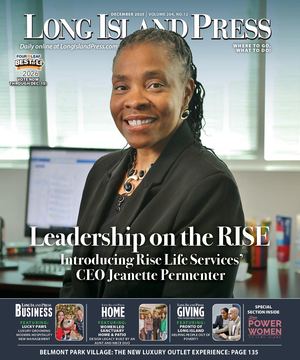The Syosset Board of Education voted on what it would like to see the state school board association promote at its meeting on Tuesday, Oct. 14, discussing the causes it would like to see lobbied for at the state level.
Board members said the New York State School Board Association will vote adopt the objectives at its annual resolution meeting later this month. All resolutions are voted on by member school boards, of which Syosset is a part.
Trustee and former board vice president Brian Grieco said he would like to see the association lobby for better food, a sentiment with which the board unanimously agreed.
“We’ve learned, over the years, that food service is very much governed by the state… lobbying for better food and more nutritious food to the state is part of our role as a board, and part of NYSSBA’s role,” Grieco said.
Trustees also voted to recommend a resolution that would “safely incorporate” AI into the classroom.
However, trustees debated NYSSBA’s language about lobbying and promoting “academic excellence, high expectations, and merit-based opportunities” above all else, which the board voted against.
Trustee Susan Falkove expressed concern that promoting the event would harm other programming, such as mental health resources.
“The fact that it said they should ‘oppose any policies or regulatory changes to curriculum’ that don’t meet one of those three things, I think, severely limits what we can do. No one is going to say that those three things aren’t important, but I don’t think they’re the only things that are important,” Falkove said.
Trustee Shany Park said students may want to attend BOCES programming that falls outside the constraints of academics, and that the board should promote those opportunities as well.
“I still think NYSSBA should be lobbying to make sure the state is focused on academic excellence for all students,” Grieco said.
Vice President Lisa Coscia said the wording of the association’s resolution is confusing, but that it does not negate other programming.
“Why wouldn’t the New York State School Board Association try to continue to push New York State to implement a curriculum that promotes academic excellence, high expectations, and merit-based opportunities?” she said.
Some trustees expressed concerns about the language, and the board voted not to recommend the resolution, with a vote of 5-4.
The district also presented updates to its curriculum at all levels, focusing on streamlining curriculum between buildings and promoting socio-emotional learning.
Assistant Superintendent for Elementary Curriculum Jeanette Wojcik said the elementary curriculum counselors are developing “transdisciplinary learning” opportunities that bridge skills and prepare students for real-world problem-solving.
She said she will meet with every elementary grade level and department to align the curriculum and explore students’ needs.
Wojcik said that starting this month, the district is launching a newsletter for elementary schoolers, titled “SYO Spark,” which will highlight acts of kindness, student engagement, and achievement. She said that each elementary school will have a newspaper club, which will assist in producing the newsletter.
Assistant Superintendent for Secondary Curriculum David Steinberg said that at the middle and high school levels, curriculum counselors are working to streamline the curriculum with help from the district’s high school students.
“We have over 360 courses between our three secondary buildings. That’s a lot of curriculum,” he said.
Steinberg said the district is working on finding and reducing “redundancies” in curriculum to enhance the student learning experience. He said administrators met with a high school “focus group” of students, who assisted them in the process. He said the high school is now creating a Student Curriculum Committee to continue that work.
“We can elevate student voice, so we can understand what their lived experience with the curriculum is,” he said.
Steinberg said that administrators will also observe each course at the high school to identify opportunities to bridge the curriculum in different subject areas.
Assistant Superintendent for Pupil Personnel Services Erin Goldthwaite said the district implements socio-emotional assistance at the elementary and secondary levels to ensure student success in and out of the classroom. She said support is provided through extracurricular activities, wellness spaces, peer leadership programs, and organized activities.
Trustee Thomas Rotolo asked whether the district has received student feedback about the socio-emotional programming.
“Are we getting either formal or informal feedback from the students… from their teachers or from the principals?” he asked.
Steinberg said principals meet regularly with students involved in school leadership to gain their perspective on programs and events.


































